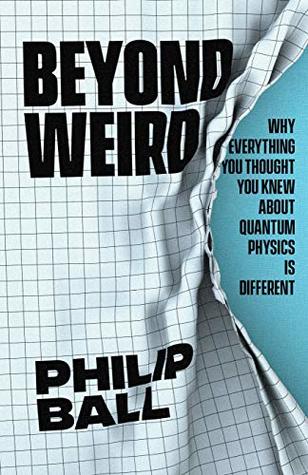More on this book
Community
Kindle Notes & Highlights
by
Philip Ball
Read between
March 17 - March 22, 2020
It’s very peculiar that a scientific theory should demand interpretation at all. Usually in science, theory and interpretation go together in a relatively transparent way. Certainly a theory might have implications that are not obvious and need spelling out, but the basic meaning is apparent at once.
Usually in science you can answer those questions by careful observation and measurement. With quantum mechanics it is not so simple. For it is not so much a theory that one can test by observation and measurement, but a theory about what it means to observe and measure.
in the epistemic view, the wavefunction tells us what expectations to have about the outcomes of observations or measurements.
But Bohr’s distinction helps to focus us on the right question. What has changed crucially, he says, is the way we look. So instead of trying to figure out what has made the difference to the outcome in terms of ‘where the particle went’, we should be asking ‘Why does it matter how we look?’ This in turn prompts a deeper question: ‘What information have we gained in this case that we did not have in that case?’ I believe that it is this question, not ‘Which path is the particle taking?’, that may eventually lead us to a better understanding of quantum mechanics.
Not everything is knowable – because not everything is beable – at once.
even if a quantum computer does indeed require only one universe, David Deutsch’s vision of a multiplicity of worlds helped him to launch the field. Critics might dismiss his view while embracing what it produced. It’s a reminder that in science – and this is arguably truer than ever in a contested field like quantum mechanics – it’s as worthwhile for an idea to be productive as it is for it to be ‘right’.
In effect this implies that the entire universe is described by a gigantic wavefunction: as Everett called it in his thesis, the ‘universal wavefunction’. This begins as a superposition of all possible states of its constituent particles – it contains within it all possible realities. As it evolves, some of these superpositions break down, making certain realities distinct and isolated from one another. In this sense, worlds are not exactly ‘created’ by measurements; they are just separated. This is why we shouldn’t, strictly speaking, talk of the ‘splitting’ of worlds (even though Everett
...more
What quantum theory seems to insist is that at the fundamental level the world cannot supply clear ‘yes/no’ empirical answers to all the questions that seem at face value as though they should have one. The calm acceptance of that fact by the Copenhagen Interpretation seems to some, and with good reason, to be far too unsatisfactory and complacent. The MWI is an exuberant attempt to rescue the ‘yes/no’, albeit at the cost of admitting both of them at once. That this results in an inchoate view of macroscopic reality suggests we really can’t make our macroscopic instincts the arbiter of the
...more
You could put it this way: what is more fundamental, a fact established by logic or a fact established by observation? Everything that looks strange about quantum mechanics stems from the incompatibility of those two options.
Wheeler developed a wonderful metaphor for illustrating this idea of a participatory realism: for showing how answers about ‘reality’ can emerge from the questions we ask in a way that is perfectly consistent, rule-bound and non-random without requiring a pre-existing ‘truth’. You probably know the guessing game of Twenty Questions, in which one player leaves the room and the others agree on a word, or a person, or an object. Then the questioner returns and asks questions to which the only permitted answers are ‘Yes’ and ‘No’. (You see: now you realize that this is a quantum game!) Imagine
...more
This highlight has been truncated due to consecutive passage length restrictions.
I like to think of this informational perspective in terms of a distinction between a theory of Isness and a theory of Ifness. Quantum mechanics doesn’t tell us how a thing is, but what (with calculable probability) it could be, along with – and this is crucial – a logic of the relationships between those ‘coulds’. If this, then that.


